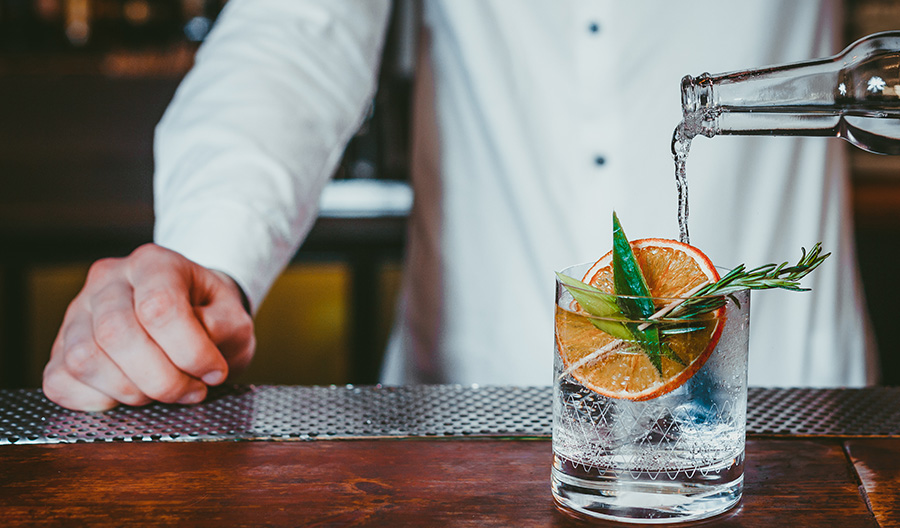Even if you’re already familiar with tequila, one of Mexico’s best-known agave spirits, figuring out the best way to enjoy it can be a little confusing—if only because tequila is available in such a wide array of expressions.
So, should you quickly toss back tequila shots or savor the spirit, sipping it slowly neat or in a cocktail? The professionals are clear on this: It takes several years for an agave plant to grow to maturity, and many more months or years to turn that agave into good tequila. Why shoot when you can savor? That said, we know throwing back a shot is part of celebrations for many people. We won’t say “never” to tequila shots, but maybe think about sipping the next round.
Types of Tequila and How to Drink Them
The vast majority of the time, experts will strongly advise that you either slowly sip your tequila neat or mix it into a balanced drink. The right path will often come down to the age of the tequila. Here are some guideposts:
Blanco or plata tequila (meaning “white” or “silver”) is aged little or not at all. The crisp, bright flavor is favored for shooting (if that’s your thing), or mixing into cocktails.
Reposado (meaning “rested), is aged for at least two months in oak, yielding a mellower but still lively tequila, often showing honey and jalapeño flavors. This age range works well to sip or mix; often it yields superior cocktails.
Añejo (“aged”) tequila rests for at least one year in oak barrels, which creates complex notes of vanilla, dried fruit and spice. Similarly, extra añejo (“extra aged”) tequila spends at least three years in oak, and often is aimed at the luxury market. Slow down and savor these sipping tequilas.
As an introduction to the spirit, it is recommended that one should sip tequila on its own. It is best to start with a well-made blanco. When you find one you enjoy, move on to barrel-aged expressions. One will soon see that aging tequila only enhances a well-made blanco and should never be used to mask imperfections.

For Sipping Tequila
What’s the Best Temperature? This is subjective, but many people prefer tequila slightly chilled. For example, most tequila cocktails are shaken or stirred with ice, and served over still more ice for maximum refreshment.
For longer-aged tequilas, consider serving them similarly to whiskey: with a splash of cold water or over a cube of ice. Adding that slight chill helps tamp down the fiery nature of higher-proof and cask-strength spirits.
The optimal serving temperature of tequila can vary based on type and personal preference. High-quality tequilas are best served neat at room temperature, as chilling can dull some of the subtler flavors and aromas. However, for a more refreshing experience, especially in cocktails or with younger tequilas, serving over ice or slightly chilled is also enjoyable.
What’s the Best Serving Glass? Our experts offered a range of options. In general, they agreed that a flute-like glass offered the best way to sample tequila neat. Specifically, they pointed to glassware with a rounded middle and narrow rim, which concentrates the aromas. These often are referred to as “tequiliero glasses” and sometimes “copitas.”
The flutes will preserve the unique and delicate aromas found in agave, which is so important to the overall experience and learning to appreciate the nuances of the flavors when you taste.
From there, you can experiment with different vessels. Perhaps the most extreme example: look to “cuernos,” which are the horns that naturally fall from cattle roaming the fields. Once sterilized they can be engraved with special designs on them.
For Mixing Tequila
Tequila pairs excellently with a wide array of ingredients. Citrus is the classic, whether that means lime in a margarita, orange in a Tequila Sunrise or grapefruit in a Paloma; often those tart, refreshing juices are balanced with sweetness ranging from orange liqueur to simple syrup (see also: grapefruit soda).
Many tequilas include zesty flavors that play well with tomato juice and other savory ingredients, yielding drinks like the Bloody Maria (a Bloody Mary with a tequila base) or the michelada. Spicy flavors also tend to surface in many tequilas, and many drinks reflect that back, showing up as spicy salt rims or chile pepper-spiked cocktails.
That said, tequila also works well lengthened with sparkling water (see: the Ranch Water, with sparkling water, or tequila-sodas). And barrel-aged tequilas in particular pair nicely with bitter flavors, not unlike other barrel-aged spirits like whiskey or rum. Enter drinks like the Rosita, a tequila-based Negroni variation, or the tequila Old Fashioned.

